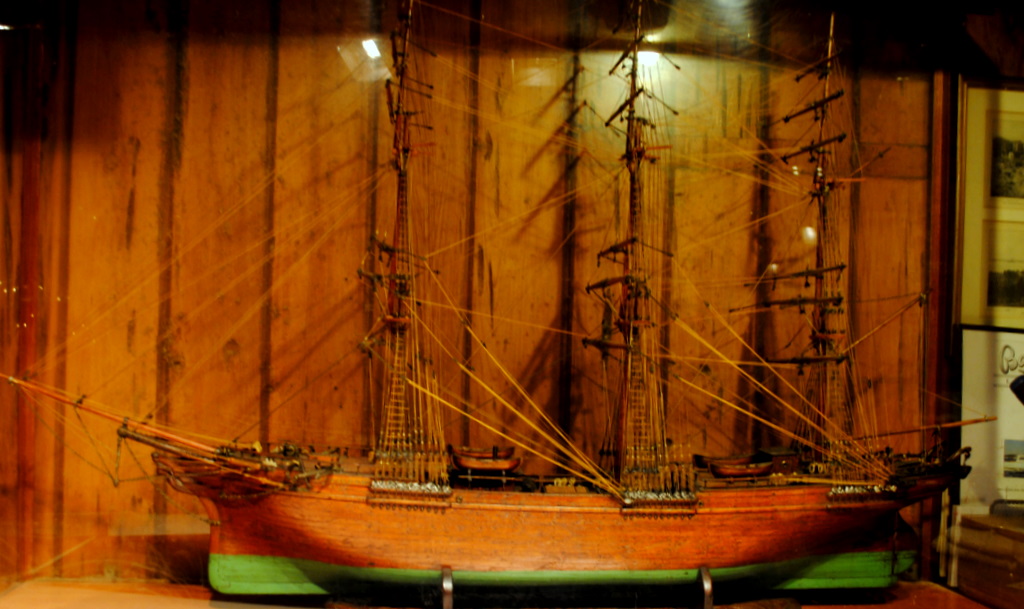Flying Cloud
Particulars
Vessel type: Clipper ship
Designer: Samuel Hartt Pook (as designer of the earlier near sister vessel Northern Light) and adapted by Donald McKay
Builder: Donald McKay Shipyard, Boston
Launched: April 15, 1851
Date Delivered: 1851
Date Modified: Various later rig changes
Date Scrapped: June 1875
Length on deck: 225 feet
Length over all: 235 feet
Beam: 40.7 feet
Depth: 21.5 feet
Draft: about 14 feet
Construction Material: Wood
Rig Type: Extreme (actually medium) clipper, 3 masted fully rigged
Crew Size: no less than 25 and generally more
Passenger Capacity: Up to about 20 passngers unless specifically configured for passenger trade.
Propulsion Plant: None
Cruising Speed: Common average speed on ocean passages was 7 knots, but that accounted for windstill periods. These vessels commonly moved at 11 knots once the breeze came in.
Maximum Speed: Sailed 374 miles in 24 hours or over 15.5 miles per hour on July 31, 1851. Sailed 402 miles in 24 hours or 16 ¾ miles per hour in 1856 under Capt. Reynard. Those were 24 hour averages, bursts approaching 20 knots were not unheard of.
Armament: None
Vessel Description
The Flying Cloud is a mid era square rigged clipper ship. In the late 1700’s there was a type of vessel referred to as Baltimore Clippers, but these vessels were smaller vessels that were generally schooner rigged. In the 1840’s a new type of ship was developed and these were square rigged three masters, intended to carry passengers and high value cargo (tea and opium) on fast long passages.
These vessels were called clippers and were very popular from about 1845 to about 1869. The clippers built from the 1840’s to about 1855 were often extreme clippers which had a deep V shaped underwater hull, but around 1850 American builders started building clippers that had flatter bottoms, which provided more cargo space and were found to be no slower than the extreme clippers. These clippers were called medium clippers, but for marketing purposes often the owners would still call them extreme clippers. Clippers were generally built in wood, but some clippers were built of iron and later on of composite construction, which meant they had iron frames and wooden hull planking. After the opening of the Suez Canal (and the transcontinental railroad in the US) the high value cargo and passenger trade shifted to steam powered vessels (and for certain trades, trains) and large sailing ships were delegated to the lower value bulk cargo trade (grain, wool, ores and guano). This reduced the need for sailing vessel speed and resulted in the design of sailing ships that optimized cargo capacity over pure speed.
Vessel History
Grinell, Minturn, and Company, New York purchased her in 1851 for $90,000 for transoceanic travel.
Flying Cloud sailed from New York to San Francisco in 89 days and 21 hours under the command of Josiah Perkins Cressey with Eleanor, his wife, as the navigator on her maiden voyage arriving on August 31, 1851.
On another voyage she sailed from Whampoa, China to New York in 94 days arriving on April 9, 1852. She sailed from April 28 to August 12, 1853 from New York to San Francisco while making record time from Sandy Hook to the Equator in 17 days, when she crossed it on May 15. Her 1854 passage from New York to San Francisco was a record-holding 89 days and 8 hours.
She was partally dismasted twice, once in 1856 and again in 1858. She sailed from Deal, England to Melbourne in 85 days arriving on May 24, 1861. Mackay & Co. of Liverpool bought her but mortgaged her and she sailed for the “Black Ball Line” in 1862. She continued to sail for Australia from Gravesend, England and eventually was sold to South Shields in 1871, but ran aground in 1874 on the sandbar of Beacon Island, St. John’s.
Condemned and sold, she wallowed for a year until she was burnt for copper scraps.
Source: Lars Bruzelius, Flying Cloud,
http://www.bruzelius.info/Nautica/Ships/Clippers/Flying_Cloud%281851%29.html
Technical Model Description
Prior to the arrival of the Scheafer models this was the finest ship model in the Bahrs’ collection, long thought to be a model of the Flying Cloud. The builder and age of this model are unknown, but it probably was built prior to World War II.
Every 30 or so years, ship models require maintenance to deal with wear and tear that occurs from changing temperatures and humidity. Henry Scheafer offered to service the model and while doing so, established this was not the Flying Cloud. It certainly represents a later US clipper ship, but it is not known if it is a model of an actual vessel or a general representation of a ship of this type.

